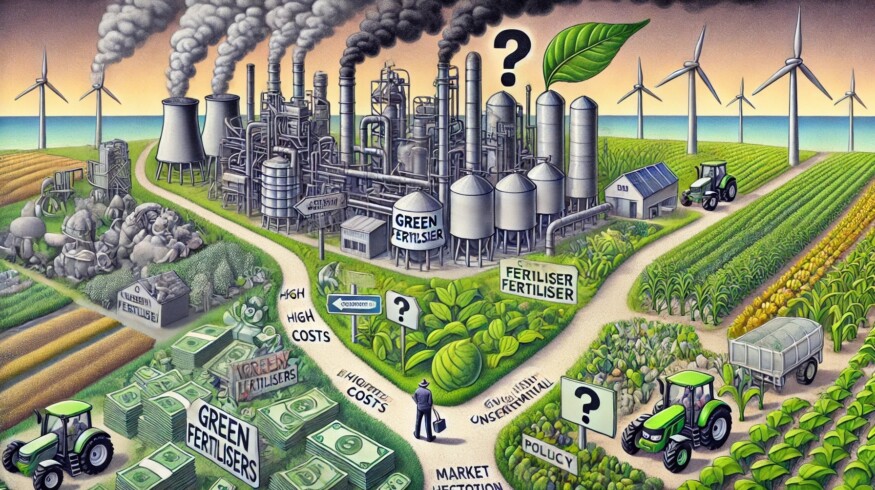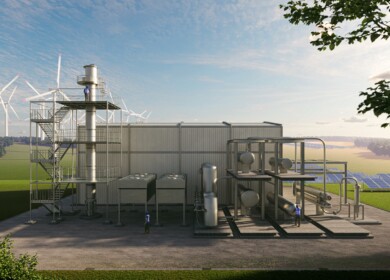Friday’s Insider: Why the production of ‘green’ fertilizers is questionable

“Green” fertilizers are designed to minimize environmental impact, reduce carbon emissions, and promote sustainable farming. However, despite their promising potential, the production of green fertilizers faces several critical challenges that make their widespread adoption questionable. From technological limitations and high production costs to uncertain environmental benefits, the path to fully integrating green fertilizers into mainstream agriculture is fraught with complexities.
The production of green fertilizers requires advanced technologies that are still in the early stages of development. Traditional fertilizers are produced through well-established industrial processes, such as the Haber-Bosch process for nitrogen fertilizers, which has been optimized over decades. In contrast, green fertilizers aim to use alternative methods, such as bio-based processes or renewable energy sources, to reduce their environmental footprint.
However, these technologies often face significant hurdles in scaling up to industrial levels. For instance, producing bio-based fertilizers requires the development of efficient microbial or enzymatic processes that can operate at a scale comparable to traditional methods. These processes must also be reliable and consistent, which is challenging given the variability of biological systems. As a result, green fertilizers are not yet capable of matching the efficiency and reliability of conventional fertilizers.
One of the most significant barriers to the production of green fertilizers is the high cost associated with their production. The advanced technologies required for green fertilizers are often more expensive than traditional methods, making the final product more costly. This price difference can be a significant deterrent for farmers, especially in developing countries where agricultural inputs must be affordable to ensure food security.
Additionally, the cost of scaling up production facilities to produce green fertilizers at a competitive price is substantial. Investments in research, development, and infrastructure are necessary, but the return on these investments is uncertain due to the nascent state of the market for green fertilizers. Until economies of scale can be achieved, green fertilizers are likely to remain more expensive than their conventional counterparts, limiting their adoption.
While green fertilizers are promoted as environmentally friendly alternatives, the actual environmental benefits are not always clear-cut. The production processes for green fertilizers can still have significant environmental impacts, particularly if they rely on large amounts of energy or if the inputs used are not sustainably sourced. For example, producing bio-based fertilizers may require large quantities of biomass, which could lead to deforestation or competition with food crops if not managed properly.
Moreover, the use of green fertilizers in the field may not always result in lower emissions or reduced environmental impact compared to traditional fertilizers. The effectiveness of green fertilizers in delivering nutrients to crops can vary, potentially leading to the need for higher application rates, which could negate some of the intended environmental benefits. Additionally, the long-term impacts of using green fertilizers on soil health and ecosystems are not yet fully understood, raising questions about their overall sustainability.
The adoption of green fertilizers by farmers is crucial for their success, but this is not guaranteed. Farmers are typically risk-averse and may be hesitant to switch to new products that have not been thoroughly tested in real-world conditions. Green fertilizers must demonstrate consistent performance, cost-effectiveness, and reliability to gain the trust of the farming community.
The transition to green fertilizers may require changes in farming practices, such as different application methods or timing. These changes could increase the complexity of farming operations, adding another layer of uncertainty for farmers. Without clear incentives or subsidies to offset the higher costs and risks associated with green fertilizers, widespread adoption is unlikely.
Government policies and regulations play a significant role in shaping the agricultural inputs market. While there is growing interest in promoting sustainable farming practices, the regulatory framework for green fertilizers is still underdeveloped. In many regions, there are no clear standards or guidelines for the production and use of green fertilizers, which can create uncertainty for manufacturers and farmers alike.
Existing subsidies and support mechanisms are often geared towards conventional fertilizers, making it challenging for green fertilizers to compete on a level playing field. Without strong policy support, including incentives for research, development, and adoption, the green fertilizer industry may struggle to gain traction.
The concept of green fertilizers aligns with the global push towards sustainability and reducing the environmental impact of agriculture. However, the production of green fertilizers is currently questionable due to several significant challenges. Technological limitations, high production costs, uncertain environmental benefits, market acceptance, and regulatory hurdles all contribute to the skepticism surrounding their widespread adoption.
For green fertilizers to become a viable alternative to traditional fertilizers, substantial advancements in technology, cost reduction, and policy support are needed. Until these challenges are addressed, the dream of green fertilizers transforming global agriculture may remain more of an aspiration than a reality.
————
About the Author of “Friday’s Insider”: Ilya Motorygin is the co-founder of GG-Trading and brings 30 years of experience to the fertilizer industry. Renowned for his comprehensive problem-solving skills, Ilya expertly manages deals from inception to completion, overseeing aspects such as financing, supply chains, and logistics.
Enjoyed this story?
Every Monday, our subscribers get their hands on a digest of the most trending agriculture news. You can join them too!
















Discussion0 comments